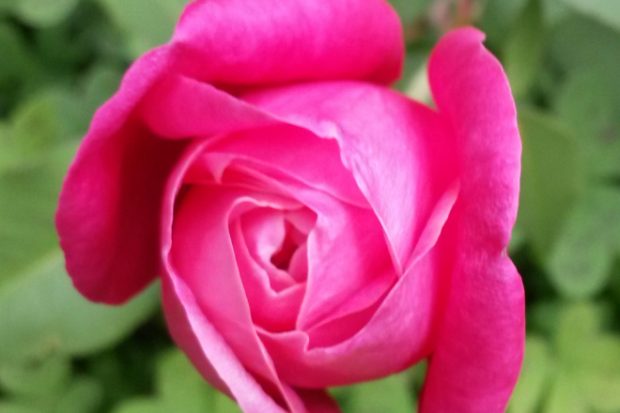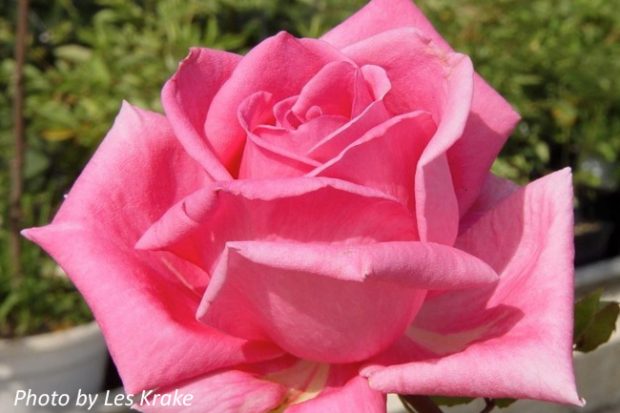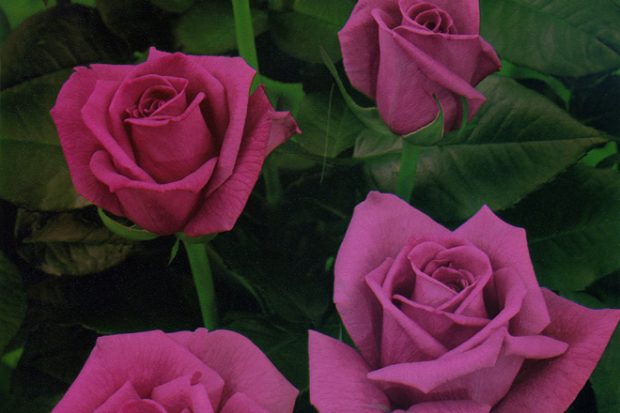Each season the Rose Society of South Australia releases cultural notes, which are recommendations from the experts on how to care for your roses. Here are the July’s cultural notes from Gavin Woods, Past President of the RSSA and the National Rose Society of Australia. Gavin is also Chief Judge with the RSSA and an International Rose Judge accredited with the World Federation of Rose Societies.
The photos are of the Rose Society’s Rose of the Month – ‘Jacaranda’.
The coldest month is also the busiest in our gardens as the old is swept away and we prepare for the coming bounty that our roses will soon offer. With frosts as heavy as I have seen in our area, temperatures dropped to minus 2.7 and as a consequence the roses have largely defoliated.
Naked plants makes visualising the location of each pruning cut easier, it makes disposal of the prunings easier; it however adds to the burden of cleaning the beds of fallen leaves much more onerous. Plants could have been pruned in June this year – I have however held off until July only because I preach the mantra “To prune in June is much too soon”! There is also a psychological hurdle to leap before pruning 600 roses and I wasn’t prepared to abandon a routine of 25 years!


Roses can be grown to suit almost any situation in the garden; to climb and cover large areas of vertical structure; to grow straight up a pole to give height to the garden; to provide a colourful hedge; in pots; or as colourful plants for the garden to add to the landscape or to provide blooms for the household.
From the diminutive Miniatures through the moderate growing Floribundas to enormous Shrubs and Hybrid Teas, there is a rose to suit any situation and to meet all tastes. There is now available a good selection of thornless roses for those who despise the occasional “love-bite’’ offered by our plants. In order to encourage our plants of all shapes and sizes to perform to their optimum, they must be pruned annually and pruned to certain ‘’Golden Rules”.
Gavin’s Golden Rules of Pruning:
- Have clean, sharp pruning tools
- Look after your back when gardening; bend at the knees, not at the waist
- Prune for short periods, then rest to protect your back
- Remove the dead wood first
- Reduce growing canes (on bush roses) by 1/3 to 2/3 depending on vigour
- Leave a cane or two to provide shade to the crown (growing point) during summer
- Remind yourself that all types are pruned differently, study the techniques
- Remove prunings and fallen leaves from your property
- Spray soon after pruning with Lime Sulphur
- A follow-up spray 2 weeks later with a horticultural oil spray is a good idea
- Remind yourself that you will not kill a rose by pruning it incorrectly
- Celebrate your hard work with a glass of red wine!

The completion of the pruning cycle is a good time to spread “Seamungus”. This is not a plant fertiliser, rather a soil tonic. I believe that maintaining soil health is as important in the quest to produce good roses as any other aspect of growing.
It is also an ideal time to spread mulch. Once the plants have begun growing again, we risk breaking precious shoots off by working amongst the roses. Hills growers should delay mulching until after the first flush of flowers as the mulch may delay soil warming and hence potentially delay the first flush of blooms. I have heard nothing but wonderful reports from growers using “Whoflungdung” with one friend crediting the product as the factor resulting in his best growing season yet!
It is time to plant bare-root roses and any pot-grown roses that have been held over from last season. I recommend hydrating the ENTIRE plant in a tub of water that has been enhanced with liquid Seamungus. Leave for 24-48 hours and then use the water to soak the plant once in the ground.
Applications of “GOGO Juice” monthly to new plants and to unthrifty established plants will be beneficial. Again, this product adds to the soil rather than the plant itself.
Who knows what the “new normal’’ will look like? The rose garden is a model of social protocols; our roses all maintaining a safe distance from each other and not touching (at least after pruning). I predict that gardeners will come out of the COVID period in a much better state than will non-gardeners. If there is a positive for us, perhaps it is that the garden industry, including the commercial rose industry is enduring its busiest time in recent history, with sales booming. That can only be good for the rose!
Rose of the month – Jacaranda
Hybrid Tea
Jacaranda was bred by Kordes in Germany 1985 from parent plants ‘Mercedes’ x ‘Emily Post’ x seedling. Jacaranda is a medium mauve-pink Hybrid Tea with a strong fragrance. Blooms have an average diameter of 12cm and around 35 petals.
The bush is vigorous and upright in form and approximately 1.4m in height. The long lasting, elegant flowers are formed on strong, long stems making it ideal for floral arrangements. Since it was released it has been used as a florist’s rose as well as a popular garden rose.
Jacaranda is a hardy, healthy plant with good disease resistance and produces flushes of blooms throughout the growing season. Best of all, it is almost thornless.
Jacaranda is available from Knight’s Roses, Treloar Roses and Garden Express.
Text: Deb Curtis

To receive our recommended Year-Round Fertilising Programmes delivered to your inbox as well as keeping up to date with Neutrog’s community news, inspirational stories from home gardeners and new product developments, join the Pooh Bah Club and we’ll email you our monthly newsletter. It’s free to join and you can unsubscribe at any time. We promise not to bombard you with emails!
